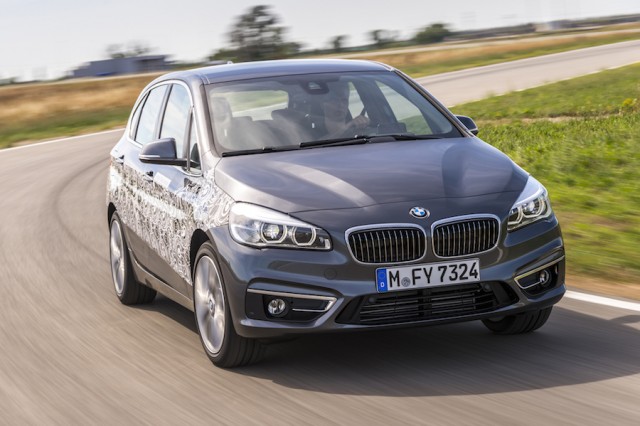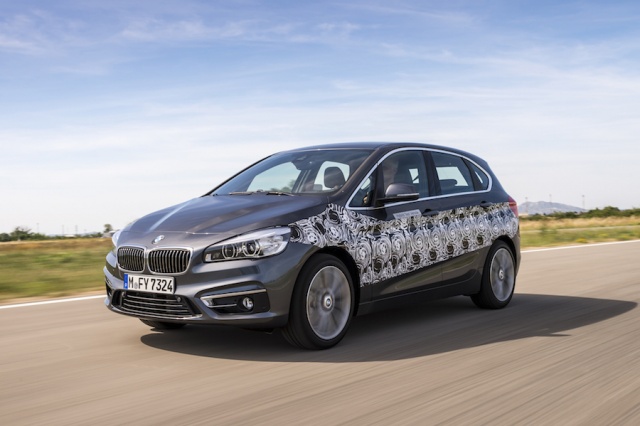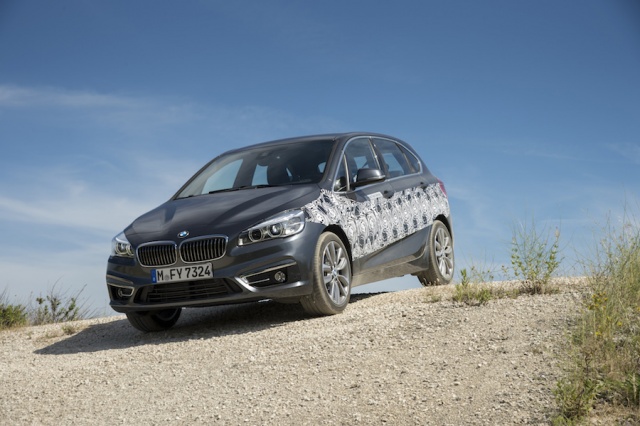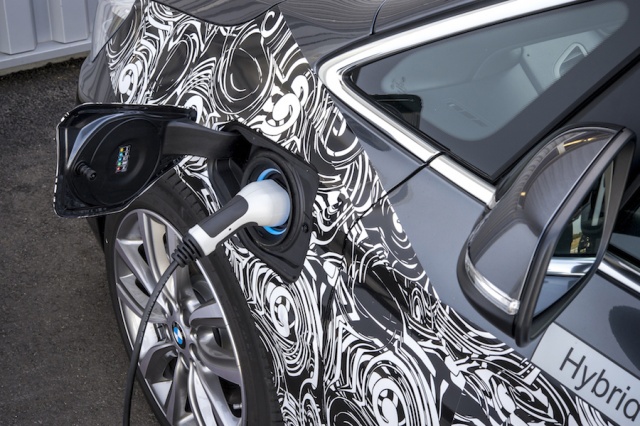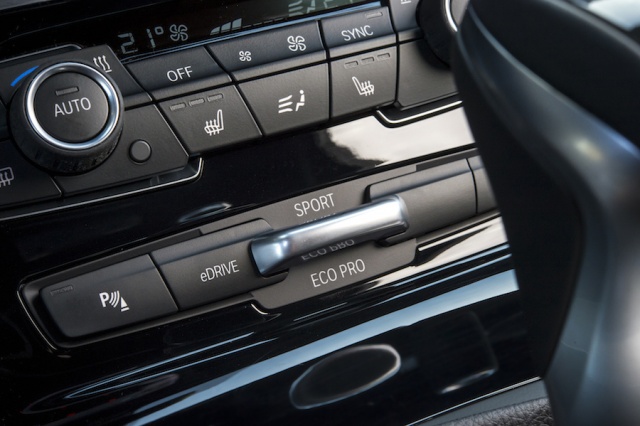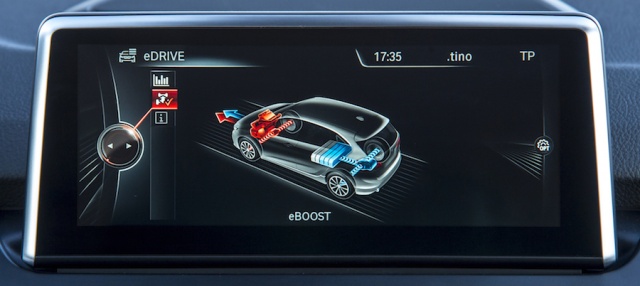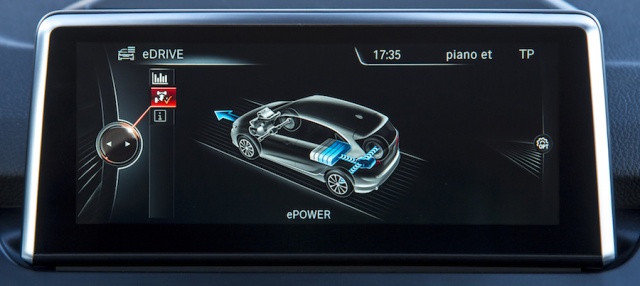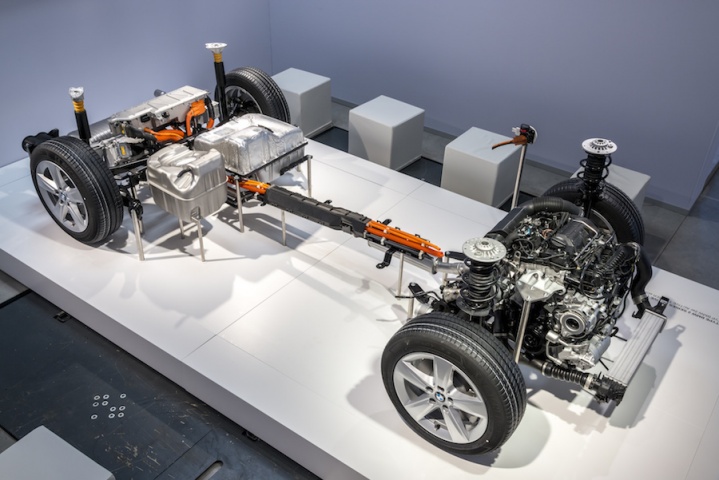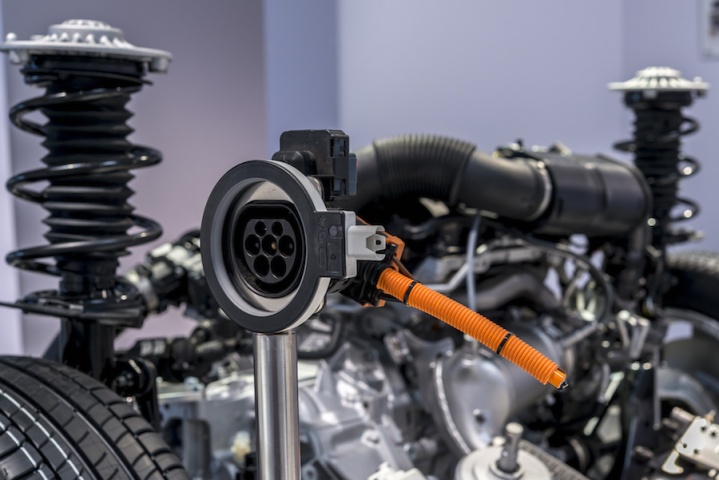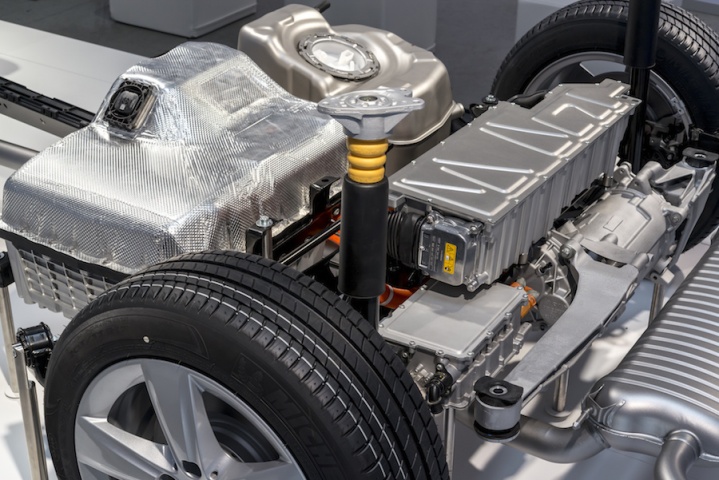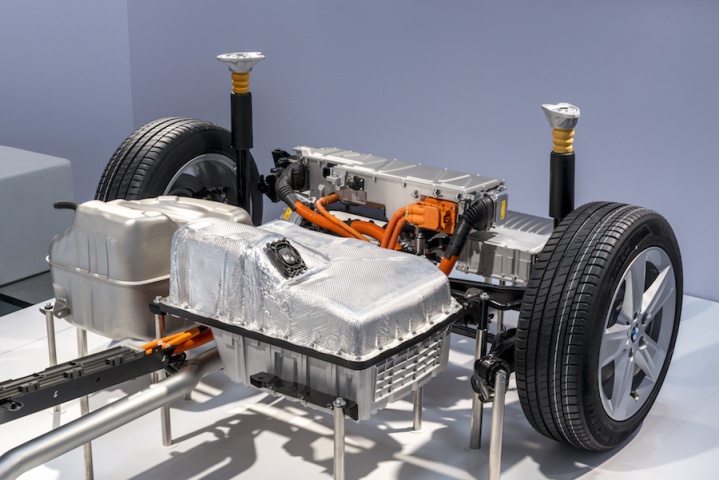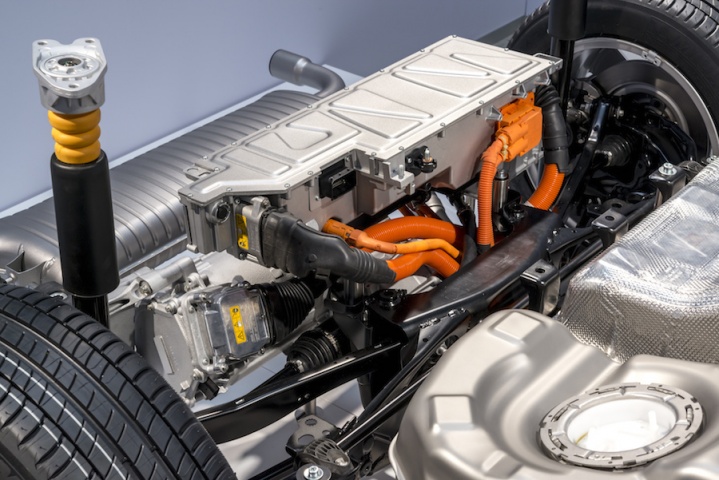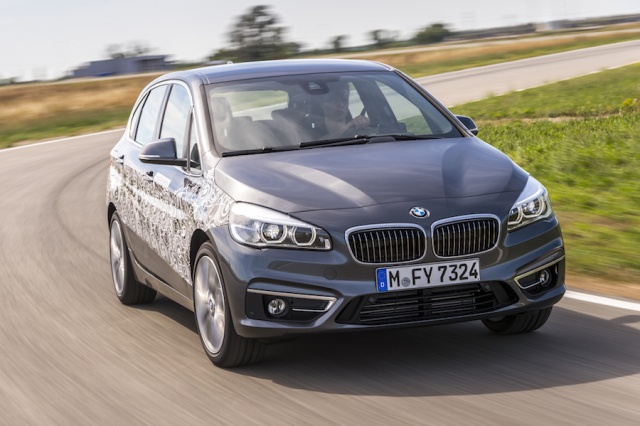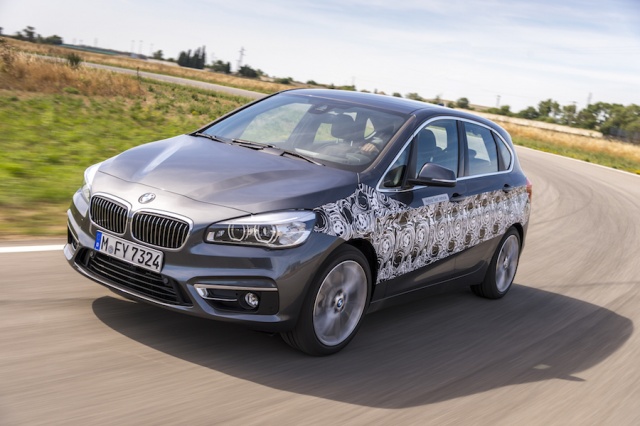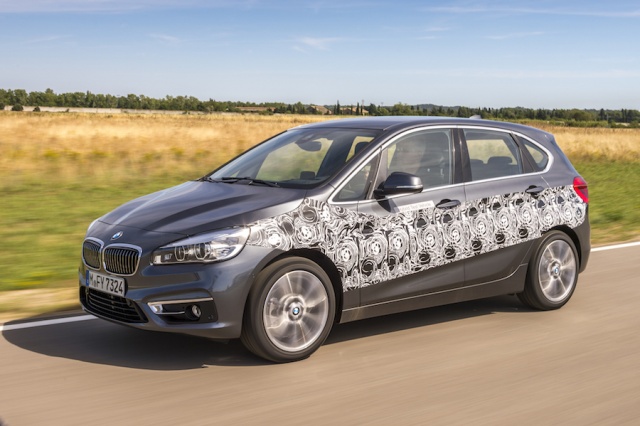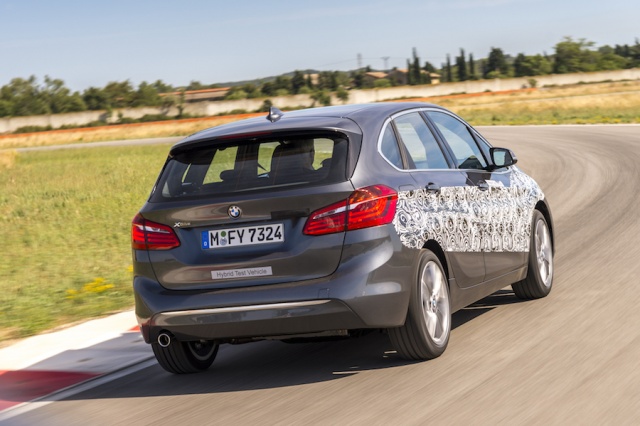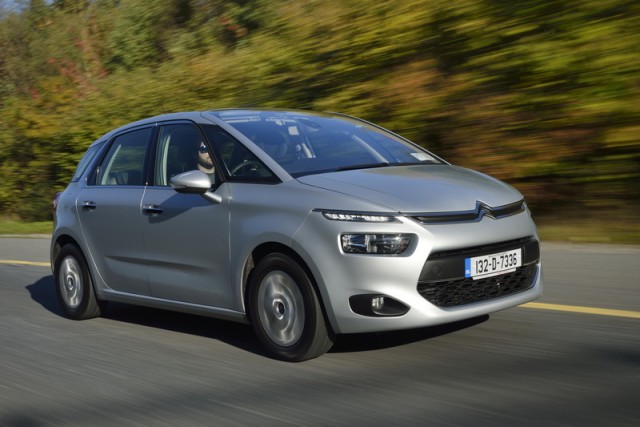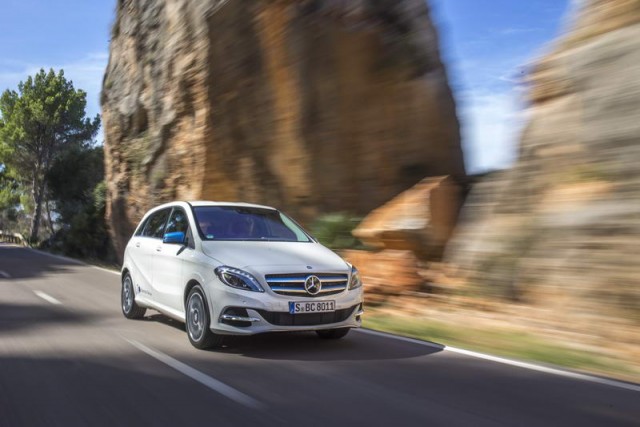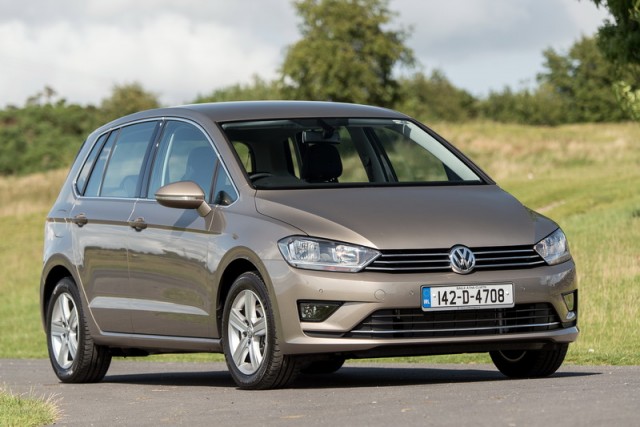Overall rating: 4/5
As the BMW plug-in hybrid model offensive continues, the next car to get the petrol-electric treatment is the 2 Series Active Tourer. We review an early pre-production prototype here, with a plug-in hybrid electric vehicle (PHEV) called the 220e likely to be confirmed for 2016. The most beguiling thing about this 2 Series, though, is that it doesn't use the 2.0-litre four-cylinder hybrid drivetrain of the larger machines but rather utilises the 1.5-litre three-pot set-up seen in the striking BMW i8 sports car.
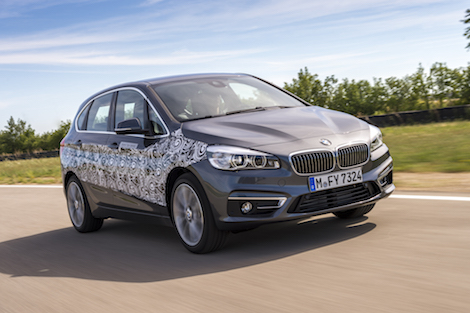
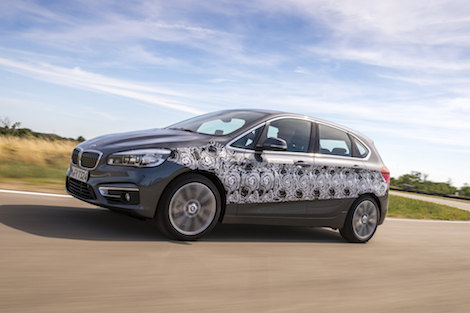
In the metal 3/5
Aside from wearing light camouflage and some strategically placed pieces of black masking tape, the 2 Series Active Tourer PHEV prototype looks pretty much identical to the regular series production cars, which is to say a bit ungainly and unlike any other BMW. There's the extra charging filler flap on the front nearside wing, as with all BMW hybrids, and at the back, the tape covered what looked to be '220e' and 'eDrive' badges, although officials on hand at Miramas firmly told us the nameplate was not set in stone as yet. Inside are the usual extra hybrid-related display screens in the instrument cluster and the iDrive system, as well as the eDrive button to cycle through the hybrid drivetrain's different modes. As the 2 Series PHEV is an automatic, a regular P-R-N-D shifter with the Steptronic manual side gate sits in the centre console.
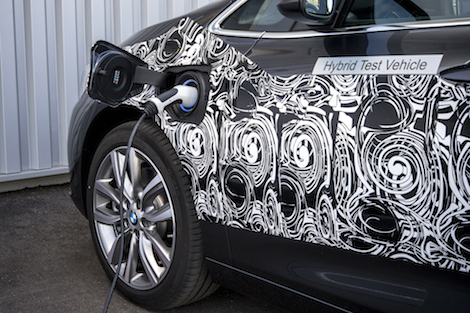
Driving it 4/5
The 1.5-litre turbocharged three-cylinder petrol engine and its attendant electric motor are inspired by the i8, which uses the same layout, but here it is transposed so the combustion engine is now at the front. BMW also says that, while on paper it appears as if the i8's drivetrain has been lifted wholesale, some different componentry is used in the Active Tourer's set-up. For the 2 Series application, the petrol engine controls the front axle, the electric motor the rear and in hybrid mode, it's a four-wheel drive vehicle - meaning you get front-wheel drive, rear-wheel drive and all-wheel drive all in one package. That's because, like the X5 xDrive40e, the eDrive modes are split into three for the Active Tourer, incorporating Auto eDrive (hybrid running), Max eDrive (full electric running) and Save (the petrol engine and brakes either maintain battery charge or juice it up back to 50 per cent).
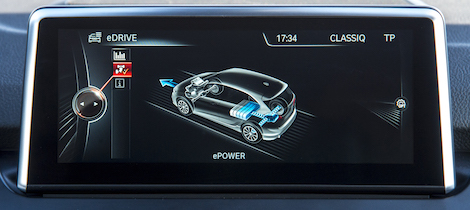
BMW didn't show us the boot or make any claims about luggage space at this early stage, but otherwise the integration of hybrid technology has not massively affected the 2 Series' practicality. It will weigh around 150kg more than a 225i xDrive model, placing the PHEV at roughly 1,735kg - not light for a compact MPV - with that bulk split 46:54 front-to-rear. Charging the battery via mains electric takes either two-and-a-quarter or three-and-a-quarter hours, depending whether owners use the i-Wallbox or a regular domestic socket, while the 2 Series PHEV should have a 38km fully electric range with a limited top speed of 125km/h. The total range of the car is around 500km, as the PHEV's 36-litre fuel tank is smaller than other Active Tourer tanks.
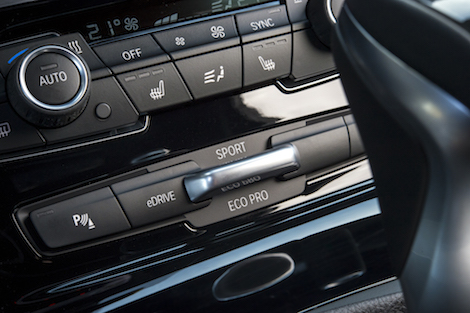
And how does it drive? As with all BMW hybrids so far, it's absolutely fine and the seamless integration of the electric technology does not impinge on the 2 Series' manners. With the petrol engine deactivated, step-off acceleration is lively and silent, the electric motor's whirr not making its way into the cabin. When the engine does fire into life, there's no kick as it joins forces with the motor, the segue being undetectable unless you're looking at the rev counter.
And that little three-cylinder unit has lost none of its charm in the transition from i8 to 2 Series, even if it is at a considerably lower output here. It possesses a pleasing, throaty growl under acceleration and revs out cleanly, making the Active Tourer feel rapid when both motors are shoving it forward. Final praise must be reserved for the brakes, which lack any of that grabby, two-stage feeling that a lot of recuperative systems can exhibit. As for ride and handling, they're broadly the same as a normal 2 Series Active Tourer's, although we only had a short drive on the Miramas test circuit in which to assess the car. Longer time behind the wheel will be needed to come up with a definitive judgment on this score.
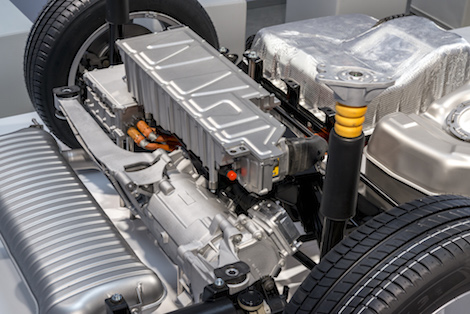
What you get for your money�N/A
At this stage, we can't give you a clear verdict here. It's likely that the 220e, if that is indeed its name, will be positioned very near the top of the Active Tourer food chain, as BMW kept referencing the current range-topping 225i as its analogue. Its economy and emissions figures are incredible, BMW quoting 2.0 litres/100km (141.2mpg) and less than 50g/km CO2 as targets for the finished product. Of course, we know PHEVs never get near these sort of figures in reality but it will have low VRT and road tax because of that emissions figure. Using the only non-i BMW PHEV, the X5 xDrive40e, as an indicator of final spec, the 2 Series Active Tourer should have a reasonably robust standard kit list.
Summary
With the i-range firmly established, the X5 xDrive40e already here, and the 340e and 740e models in the pipeline for 2016, it was inevitable that hybrid attentions would turn to the smaller cars in BMW's stable. Fitting this petrol-electric drivetrain into the 2 Series is a no-brainer and it should return credible real-world economy figures thanks to its substantial 220hp/385Nm outputs. It could do with losing a bit of weight and we're eager to see how the rear axle electric motor packaging impinges on boot space, but otherwise this looks like another successful PHEV that should make its way into showrooms sometime next year. More intriguingly, it could point the way to a MINI plug-in hybrid coming soon, as the 2 Series shares its chassis set-up with that car.

